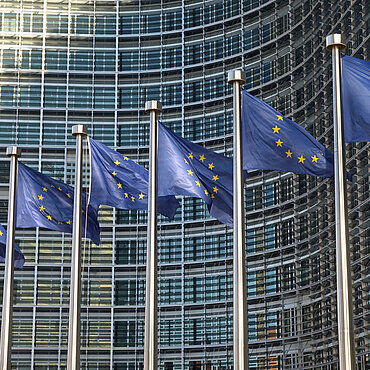EU is Planning Extensive Reform of VAT Legislation
EU is Planning Extensive Reform of VAT Legislation
The European Commission has presented its proposal for the most extensive reform of EU VAT legislation since the single market was created. The proposal provides for substantial new regulations already for the coming year; as of 1 January 2022, a fundamental re-design of the VAT system is intended. This reform is particularly significant for cross-border trade within the EU.
Background
With the completion of the European single market, with effect from 1 January 1993, customs duties and import sales taxes were abolished in the movement of goods within the Union, and taxation of cross-border trade had to be regulated in a different manner. Since then, in the intra-community trade of goods between companies, the tax-exempt intra-community supply in the Member State of dispatch is opposed by the taxable intra-community acquisition in the Member State of destination. This system created for cross-border trade is particularly prone to fraud and means significant bureaucratic effort for the companies in the EU. According to information provided by the European Commission, the compliance costs for companies active in cross-border trade are 11% higher than those of companies only active on a national level.
Final VAT System 2022
The new regulation is supposed to be based on the principle that the taxation takes place in the Member State of destination of the delivery of goods or the provision of services, that the supplier owes VAT, and that only one single registration will be required for the declaration, payment and deduction of VAT. Accordingly, if a supplier in Germany owes VAT in another Member State, this does not require registration in this Member State. Rather, the declaration and payment of VAT is made via the “one-stop-shop”, as is already the case now for electronic services. If the purchasing company is a “certified taxable person” (see below), it is intended to reverse the tax liability (“reverse charge”), which would further facilitate the process for the supplier. The change-over to this system is supposed to first apply to intra-community supplies between companies and to be extended later to all cross-border deliveries and services.
Preliminary Improvement Measures 2019
The preliminary improvement measures include regulations on chain transactions and consignment warehouses that have long been overdue. Moreover, the VAT identification number is to become a material requirement for the tax exemption in the context of intra-community deliveries (that will apply until 2022) and, for the first time, uniform rules on proof for intra-community deliveries are supposed to be created. With regard to the final VAT system, the introduction of the “certified taxable person” will probably be the most significant innovation. The status will be granted to economic operators who have demonstrated their tax reliability. Most internationally operating companies are probably well aware of the comparable regulation in customs law on the Authorized Economic Operator (AEO).
Practical Significance
If the European Commission’s proposal is implemented, the status of the certified taxpayer will be practically indispensable for companies active in cross-border trade as of 1 January 2022. The fact that the regulations on chain transactions and consignment warehouses will only apply to certified taxable persons as of 2019, should provide additional motivation for companies to familiarize themselves with the new status as early as possible. There are no problems for operators who have been granted an AEO-C licence: the criteria of the certified taxpayer must then automatically be regarded as fulfilled.
Dr Hartmut Henninger
Lawyer
Hamburg

Subscribe to our GvW Newsletter here - and we will keep you informed about the latest legal developments!




